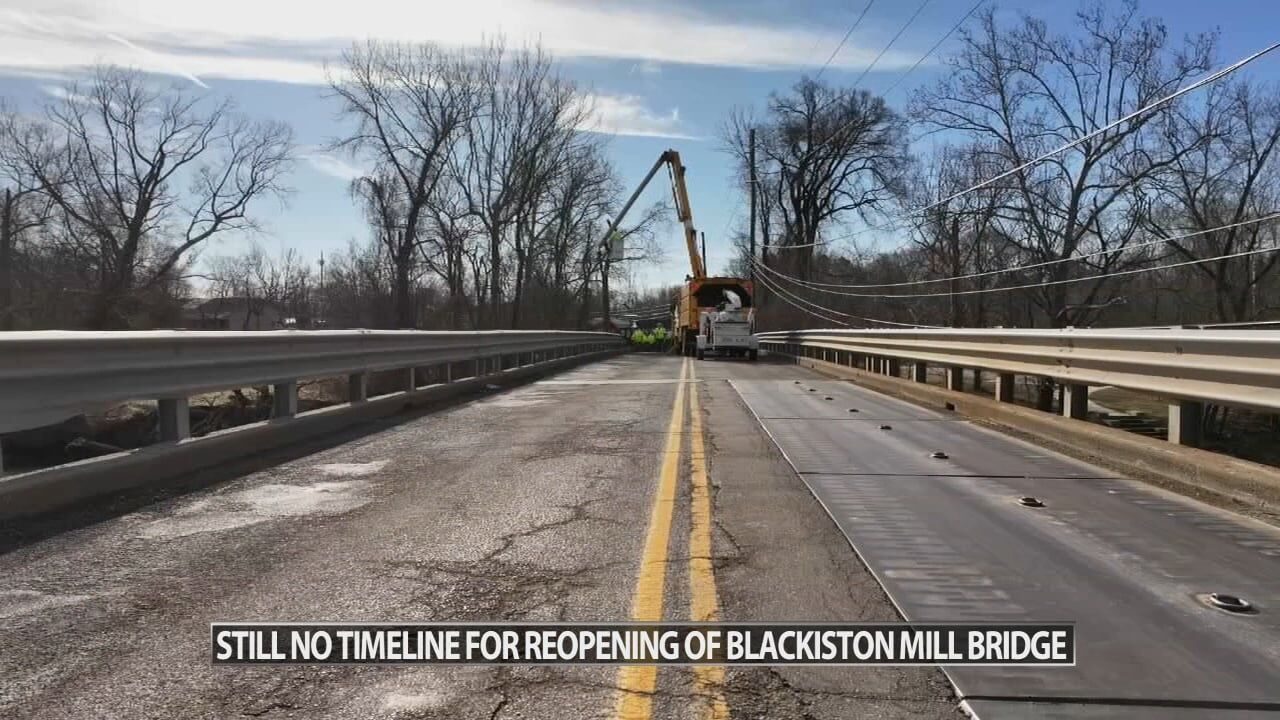Report on Infrastructure Failure and its Impact on Sustainable Development Goals at a New Educational Facility
Executive Summary
An incident of significant water damage at the newly constructed Charlestown elementary school, a $55 million facility within the Greater Clark County Schools district, highlights critical challenges related to several United Nations Sustainable Development Goals (SDGs). The failure of infrastructure just prior to the school’s inaugural opening raises concerns regarding SDG 9 (Industry, Innovation, and Infrastructure), SDG 11 (Sustainable Cities and Communities), and SDG 13 (Climate Action). The primary consequence of this event is the potential disruption to SDG 4 (Quality Education) for incoming students. This report details the incident, its causes, and the response, analyzing them through the lens of these essential global goals.
Incident Analysis: A Challenge to Resilient Infrastructure
The structural failure occurred approximately one week before the scheduled first day of school on July 31. The event underscores a vulnerability in the new community infrastructure, directly impacting its ability to provide a safe and stable environment.
- Event: Severe water damage originating from a failed roof drain.
- Cause: The drainage system was unable to cope with an extreme weather event, specifically 6.5 inches of rainfall within a two-hour period.
- Affected Area: Sources confirmed water damage was sustained in the school’s library, a critical resource for learning.
This incident serves as a case study for the importance of integrating climate resilience into infrastructure planning, a core tenet of SDG 9 and SDG 11. The failure to anticipate and build for extreme weather events, which are increasing in frequency due to climate change, poses a direct threat to community assets and services, a key concern of SDG 13.
Implications for SDG 4: Quality Education
The primary mission of the new school is to deliver quality education, a goal directly aligned with SDG 4. The water damage presents a significant, albeit temporary, barrier to achieving this objective.
- Disruption to Learning Environment: The presence of drying equipment and the need for reconstruction activities threaten the creation of a safe, welcoming, and effective learning space for the start of the academic year.
- Access to Resources: Damage to the library compromises access to essential educational materials, hindering the delivery of a comprehensive curriculum from day one.
- Assurance of Safety: The incident necessitates a thorough remediation process to ensure the building is free from mold and other secondary effects of water damage, safeguarding the long-term health and well-being of students and staff as per the targets of SDG 4.
Stakeholder Response and Partnership for the Goals (SDG 17)
The response to the crisis involves collaboration between public and private entities, reflecting the principles of SDG 17. The effectiveness of this partnership is crucial for a swift resolution and for maintaining public trust.
Official Statements and Actions
- Initial Response: The Greater Clark Board of School Trustees initially declined to comment on the situation when questioned at a public meeting.
- District Superintendent’s Statement: Superintendent Mark Laughner later confirmed the cause of the flooding was a roof drain overwhelmed by heavy rain.
- Accountability and Resolution: The Superintendent affirmed that the contractor and engineers are developing a solution to correct the drainage issue.
- Financial Responsibility: It was stated that all corrective work and repairs would be completed at no cost to the school district, demonstrating contractor accountability.
- Commitment to Timeline: The district has provided assurances that the school will be fully corrected and ready for students on the first day of school.
1. Which SDGs are addressed or connected to the issues highlighted in the article?
The article on the water damage at the new Greater Clark County elementary school touches upon several Sustainable Development Goals (SDGs). The issues of building safe educational facilities, ensuring resilient infrastructure, and adapting to climate-related hazards connect directly to the following SDGs:
- SDG 4: Quality Education – The core subject is a new school, a facility for education, and its readiness to provide a safe learning environment.
- SDG 9: Industry, Innovation and Infrastructure – The article discusses the failure of a new, expensive piece of public infrastructure to perform its function reliably.
- SDG 11: Sustainable Cities and Communities – The school is a critical piece of community infrastructure, and its vulnerability to flooding highlights issues of urban resilience and disaster risk reduction.
- SDG 13: Climate Action – The direct cause of the damage was an extreme weather event, linking the infrastructure’s failure to the broader need for climate adaptation.
2. What specific targets under those SDGs can be identified based on the article’s content?
Based on the specific problems discussed in the article, the following targets are relevant:
SDG 4: Quality Education
- Target 4.a: “Build and upgrade education facilities that are child, disability and gender sensitive and provide safe, non-violent, inclusive and effective learning environments for all.”
- Explanation: The article focuses on a brand new elementary school building. The water damage, which occurred “a little more than a week before the first day of school,” directly compromises its ability to function as a “safe” and “effective learning environment.” The presence of “fans and dehumidifiers” and the need for “reconstruction” show the facility is not ready or safe for students.
SDG 9: Industry, Innovation and Infrastructure
- Target 9.1: “Develop quality, reliable, sustainable and resilient infrastructure…to support…human well-being…”
- Explanation: The “$55 million campus” is a significant investment in public infrastructure intended to support human well-being (education). However, the article reveals it is not “resilient” or “reliable,” as “a roof drain that could not hold the 6.5 inches of rain” failed. This points to a lack of quality in design or construction that can withstand local environmental stresses.
SDG 11: Sustainable Cities and Communities
- Target 11.5: “By 2030, significantly reduce…the number of people affected and substantially decrease the direct economic losses…caused by disasters, including water-related disasters…”
- Explanation: The flooding is a small-scale “water-related disaster.” It has “affected” the incoming students and staff by jeopardizing the school’s opening. While the article states the repairs will be “at no cost to the district,” there are still “direct economic losses” in the form of costs for the contractor and Servpro to conduct the cleanup and reconstruction.
SDG 13: Climate Action
- Target 13.1: “Strengthen resilience and adaptive capacity to climate-related hazards and natural disasters in all countries.”
- Explanation: The superintendent’s statement explicitly identifies a “climate-related hazard” as the cause: “6.5 inches of rain that fell in the two-hour period.” The failure of the school’s roof drain demonstrates a lack of “resilience and adaptive capacity” in the new infrastructure. The plan for engineers to “correct the issue” is a direct response to strengthen this capacity.
3. Are there any indicators mentioned or implied in the article that can be used to measure progress towards the identified targets?
The article contains several pieces of information that can serve as direct or implied indicators for the identified targets:
SDG 4: Quality Education
- Indicator (Implied): Number of educational facilities requiring significant repair before opening due to structural failures.
- Explanation: The article reports on one new school suffering “water damage” in its library and other areas. This serves as a negative indicator for Target 4.a, as the learning environment was compromised and made unsafe before it could even be used.
SDG 9: Industry, Innovation and Infrastructure
- Indicator (Direct): Financial value of investment in new infrastructure.
- Explanation: The article specifies the project is a “$55 million campus,” which measures the investment in new educational infrastructure.
- Indicator (Implied): Proportion of new infrastructure failing to withstand local hazards.
- Explanation: The failure of the roof drain in a brand-new building is a clear indicator that this piece of infrastructure was not resilient, as required by Target 9.1.
SDG 11: Sustainable Cities and Communities
- Indicator (Implied): Direct economic loss attributed to water-related disasters.
- Explanation: While a final figure isn’t given, economic loss is clearly implied. The article mentions a “clean-up effort is underway,” the hiring of Servpro for “drying out,” and a subsequent “reconstruction part.” These activities all represent economic costs resulting from the flood damage.
SDG 13: Climate Action
- Indicator (Direct): Measure of extreme weather event intensity.
- Explanation: The article provides a specific metric for the climate-related hazard: “6.5 inches of rain that fell in the two-hour period.” This data point is a direct indicator of the type of event that infrastructure must be resilient to.
- Indicator (Implied): Implementation of corrective actions to improve infrastructure resilience.
- Explanation: The statement that “engineers are working on a solution for the problem and will correct the issue” indicates an action being taken to strengthen the adaptive capacity of the building, which is a measure of progress toward Target 13.1.
4. Table of SDGs, Targets, and Indicators
| SDGs | Targets | Indicators Identified in the Article |
|---|---|---|
| SDG 4: Quality Education | 4.a: Build and upgrade education facilities to provide safe and effective learning environments. | Implied: A new school suffering “water damage” in the library, rendering the learning environment unsafe before opening. |
| SDG 9: Industry, Innovation and Infrastructure | 9.1: Develop quality, reliable, sustainable and resilient infrastructure. | Direct: Investment of “$55 million” in a new school campus. Implied: Failure of a “roof drain” in a new building, indicating a lack of resilience. |
| SDG 11: Sustainable Cities and Communities | 11.5: Reduce the number of people affected and decrease direct economic losses from water-related disasters. | Implied: Economic loss from the cost of “drying out” and “reconstruction.” The number of people affected includes the students and staff of the new elementary school. |
| SDG 13: Climate Action | 13.1: Strengthen resilience and adaptive capacity to climate-related hazards. | Direct: An extreme weather event measured as “6.5 inches of rain that fell in the two-hour period.” Implied: Corrective action by engineers to fix the drainage problem as a measure to strengthen adaptive capacity. |
Source: wdrb.com







